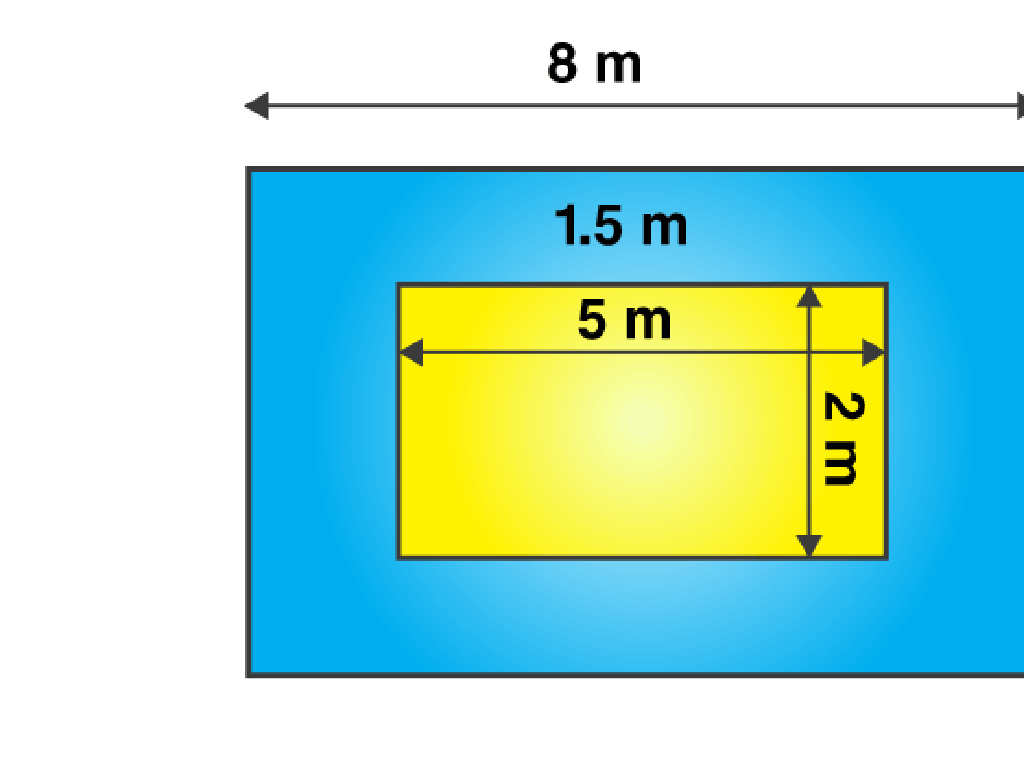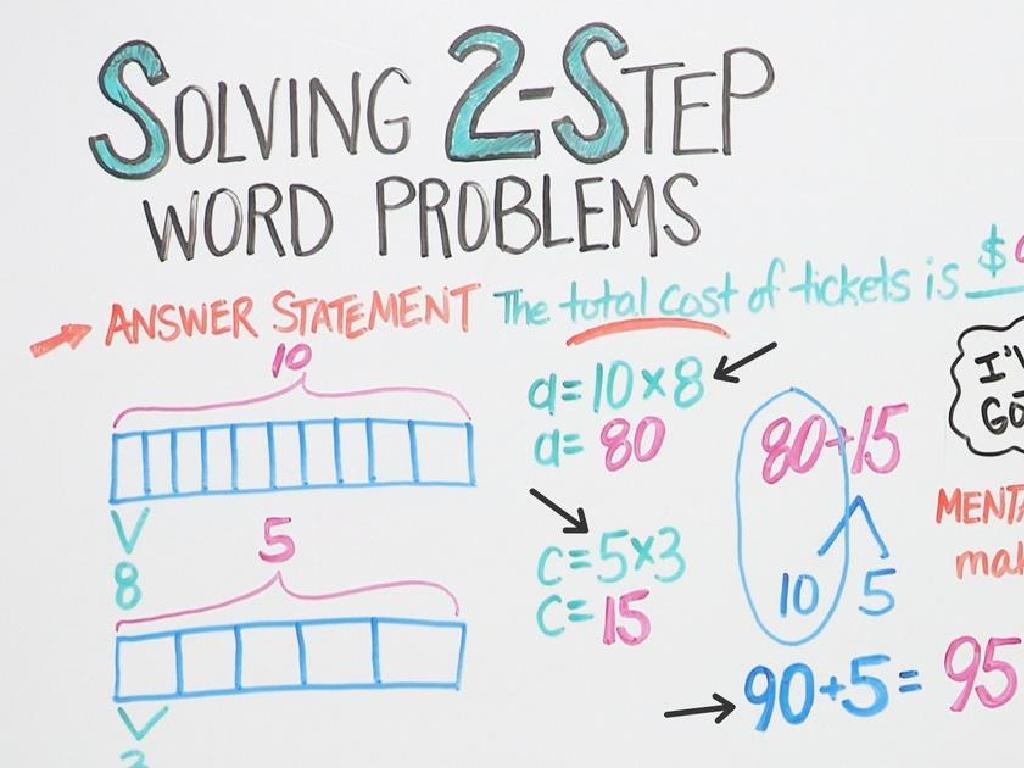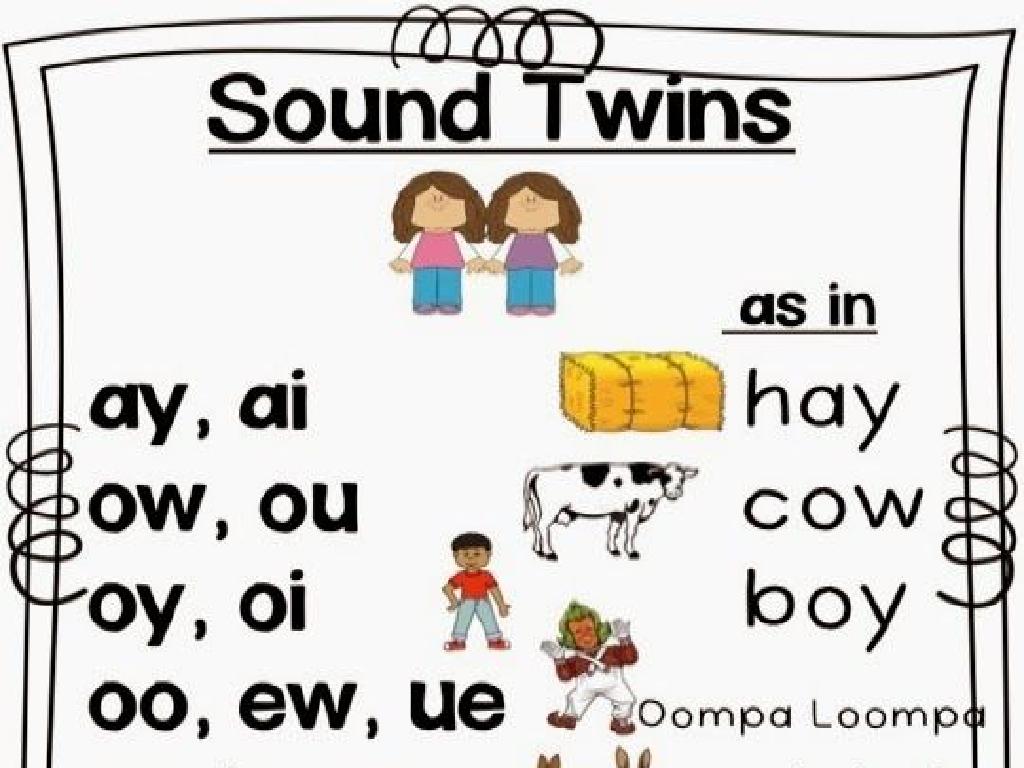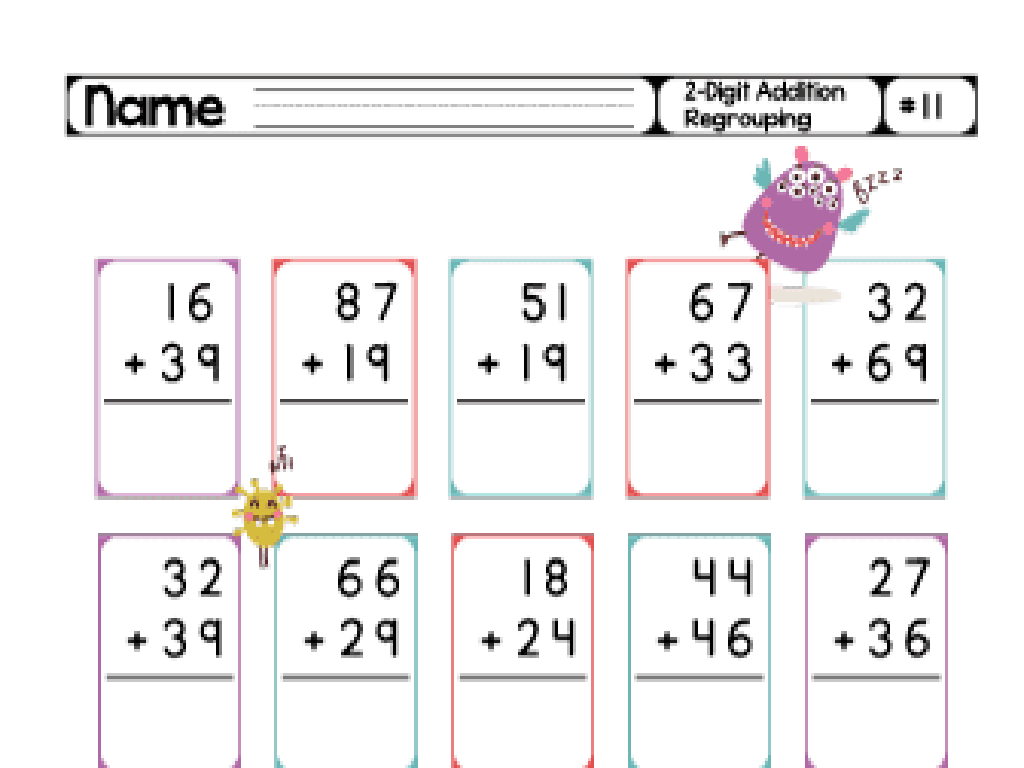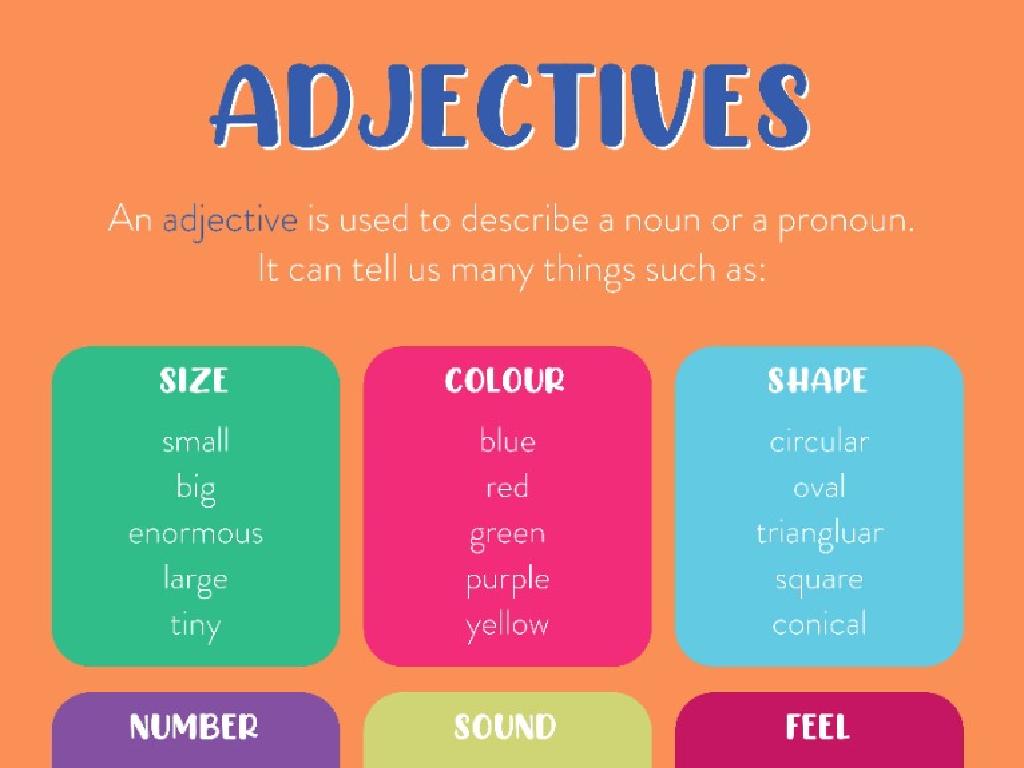Compare Illustrations Of Literary And Historical Subjects
Subject: Language arts
Grade: Sixth grade
Topic: Visual Elements
Please LOG IN to download the presentation. Access is available to registered users only.
View More Content
Visual Elements in Literature: A Comparative Study
– Pictures narrate stories
– Illustrations can set the scene or convey emotions without words.
– Text and illustrations synergy
– How do images enhance or reflect the written narrative?
– Comparing literary & historical images
– Observe differences in depicting fictional characters vs. historical figures.
– Critical observation skills
|
This slide introduces students to the concept of visual storytelling and the symbiotic relationship between text and illustrations. It aims to develop students’ abilities to compare and contrast visual representations of literary and historical subjects. Encourage students to think about how illustrations can provide context, emotional subtext, or additional layers of meaning to the written word. Discuss how the portrayal of literary characters might differ from historical figures due to the artist’s interpretation or creative liberties versus the need for historical accuracy. Use examples from well-known stories and historical events to illustrate these points. The goal is to enhance students’ critical thinking and observation skills as they analyze visual elements.
Exploring Visual Elements in Literature
– Visual elements in context
– Images, colors, layout, and design are visual elements.
– Enhancing text comprehension
– They give more meaning and help us understand the story better.
– Visual elements in books
– Think about the pictures in ‘Charlotte’s Web’ or ‘Diary of a Wimpy Kid’.
|
This slide introduces the concept of visual elements and their role in literature. Visual elements such as images, colors, layout, and design are crucial in adding layers of meaning and aiding comprehension of the text. They can set the tone, mood, and setting of a story, making it more engaging for readers. Use examples from well-known children’s books that incorporate strong visual elements to illustrate the point. Encourage students to think about how these elements have affected their own reading experiences and understanding of the story. Discuss how illustrations can influence their perception of characters and events.
Literary vs. Historical Illustrations
– Literary illustrations animate tales
– They add visuals to fiction, like in ‘Harry Potter’
– Historical illustrations show reality
– They represent actual events/people, like ‘Moon Landing’
– Purpose of various illustration types
– Literary aims to engage imagination, historical aims to inform
– Comparing illustration impacts
|
This slide aims to help students differentiate between literary and historical illustrations and understand their purposes. Literary illustrations are often found in novels, children’s books, and other fictional works, serving to enhance the reader’s imagination and bring the story to life. Historical illustrations, on the other hand, are used in textbooks, documentaries, and exhibits to provide a visual representation of real-life events or figures, aiding in education and historical accuracy. Encourage students to think about how illustrations affect their perception of a story or historical account. Ask them to bring examples of each type of illustration for a class discussion, fostering a deeper understanding of the visual elements in literature and history.
Analyzing Illustrations in Literature and History
– Examine illustration details
– Observe colors, shapes, and characters. What stands out?
– Reflect on the mood conveyed
– Does the image feel happy, sad, or exciting? Mood is key.
– Relate images to the text
– How do the pictures relate to the story or historical event?
– Discuss the story depicted
– Share your thoughts on the narrative shown through the art.
|
This slide aims to guide students through the process of analyzing illustrations in literary and historical contexts. Encourage them to look closely at the details in the illustrations, such as the colors, shapes, and characters, and consider what these elements might signify. Ask them to think about the emotions the illustration evokes and how the artist’s choices contribute to the overall mood of the scene. Students should also make connections between the image and the text, considering how the illustration supports or adds depth to the story or historical event being depicted. Finally, facilitate a discussion where students can articulate the narrative they see unfolding in the artwork. This exercise will enhance their visual literacy and critical thinking skills.
Comparing Literary & Historical Illustrations
– Similarities in illustrations
– Both may convey themes or emotions
– Differences in illustrations
– Style, purpose, and time period may differ
– Organize with a Venn diagram
– A tool to visually sort similarities and differences
– Compare two specific illustrations
– Example: ‘The Grapes of Wrath’ vs. a Great Depression photo
|
This slide aims to guide students in understanding how to compare and contrast illustrations from literary and historical contexts. Students should consider how both types of illustrations can represent ideas, themes, or emotions. They should also explore how the style, intended purpose, and time period can influence the differences between the two. Using a Venn diagram will help students visually organize their thoughts and enhance their analytical skills. As an activity, students will compare a specific literary illustration, such as one from ‘The Grapes of Wrath,’ with a historical photograph from the Great Depression, discussing the similarities and differences they observe. This exercise will help them practice critical thinking and visual literacy.
Exploring ‘The Adventures of Tom Sawyer’
– Examine a literary illustration
– Look at how the artist illustrates a scene from the book.
– Observe the portrayal of adventure
– Notice details that suggest excitement and creativity.
– Discuss the story elements depicted
– Identify which part of Tom Sawyer’s story is being shown.
– Reflect on the artist’s interpretation
– Consider how the artist’s view might differ from your imagination.
|
This slide aims to engage students in analyzing how illustrations contribute to their understanding of literary works. By examining an illustration from ‘The Adventures of Tom Sawyer’, students will learn to identify key elements of the story captured by the artist and discuss how these elements enhance the narrative. Encourage students to think critically about the artist’s choices in depicting the adventure and imagination central to the story. Ask them to consider how illustrations can influence their interpretation of a text and to share their thoughts on what the picture communicates about the story’s themes and characters.
Analyzing ‘The Boston Tea Party’ Illustration
– Observe the historical illustration
– Look at the colors, emotions, and actions shown.
– Note details depicting the event
– Ships, tea in water, and costumes show the 1773 protest.
– Discuss the illustration’s story
– What narrative is being presented through this image?
– Reflect on the event’s significance
– How does the illustration make you feel about the event?
|
This slide aims to engage students in analyzing an illustration of ‘The Boston Tea Party’. Encourage them to carefully observe the details in the image, such as the expressions and actions of the figures, the setting, and the use of colors. Ask them to consider what these details might suggest about the historical event. Initiate a discussion on how the illustration conveys a narrative and what emotions it evokes regarding the event. This activity will help students understand the power of visual elements in portraying historical events and enhance their critical thinking skills in interpreting artistic representations.
Group Activity: Compare and Contrast Illustrations
– Choose a literary & historical illustration
– Use a Venn diagram for comparison
– A Venn diagram has overlapping circles to show what’s common and what’s not
– Note similarities & differences
– Look for themes, subjects, styles in the illustrations
– Get ready to present your findings
|
This group activity is designed to engage students in a visual comparison of literary and historical subjects. By choosing one illustration from literature (like a book cover or a scene from a story) and one from history (like a depiction of a historical event), students will use a Venn diagram to identify and document both the similarities and differences between the two. Encourage students to consider aspects such as the mood, colors, subjects, and what each illustration might be trying to convey. After the comparison, each group will prepare a short presentation to share their analysis with the class. This activity will help students develop critical thinking and presentation skills. Possible variations for different groups could include comparing different genres, time periods, or cultural representations in illustrations.
Class Discussion: Illustrations in Literature vs. History
– Share your group’s Venn diagram
– Discuss similarities and differences
– Compare elements like mood, style, and focus in both types of illustrations
– Reflect on illustration’s impact
– Consider how images clarify or add depth to written content
– How do pictures aid text comprehension?
|
This slide is meant to facilitate a class discussion on the role of illustrations in understanding literary and historical subjects. Each group will present their Venn diagrams comparing the visual elements of both fields. Encourage students to actively participate in discussing the similarities and differences they observed. Guide them to reflect on how illustrations can enhance or alter their interpretation of a text. Possible activities: 1) Groups can analyze a specific illustration and predict the story or historical event it represents. 2) Students can create their own illustrations for a text they’ve read. 3) Have a debate on which is more informative: text or illustration. 4) Discuss the role of illustrations in different genres of literature. 5) Explore how historical illustrations can influence our understanding of events.
Wrapping Up: Comparing Illustrations
– Recap on illustration comparison
– Homework: Find & compare illustrations
– Find one literary and one historical illustration
– Write a comparison paragraph
– Focus on visual elements and their meanings
– Share your insights next class
|
As we conclude today’s lesson, remind students of the key points in comparing illustrations of literary and historical subjects, emphasizing the importance of visual elements such as color, shape, and composition. For homework, students should find one illustration from a literary source (like a book cover or a scene from a story) and one from a historical context (such as a painting depicting a historical event). They need to write a paragraph comparing the two, focusing on how the visual elements convey different themes and emotions. Encourage them to think critically about what each illustration is trying to communicate. In the next class, students will have the opportunity to share their work and discuss the similarities and differences they observed in the illustrations.

